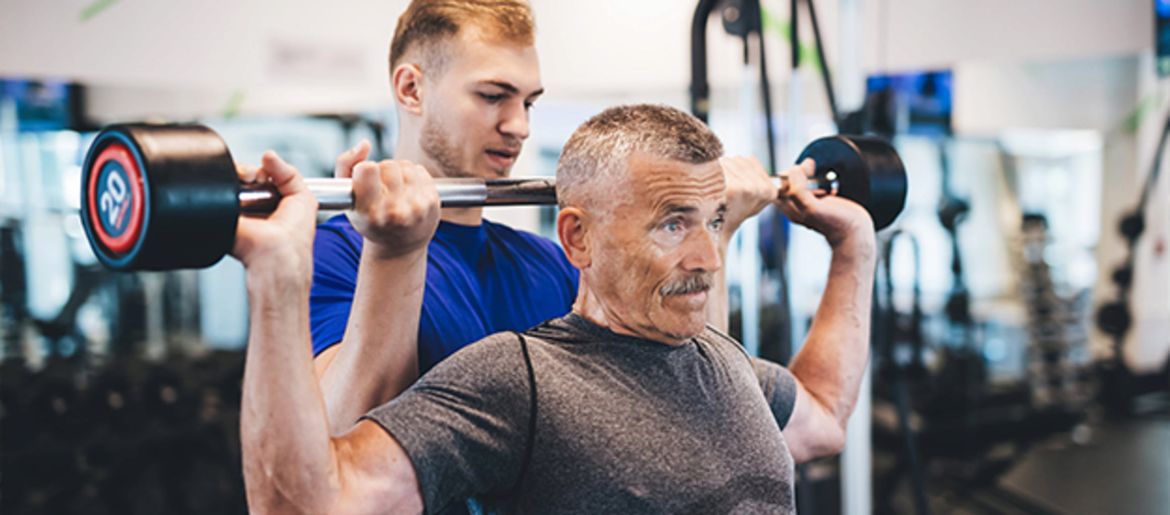Age-Related Muscle Loss- Exercise Helps
As we tend to live longer and longer, muscle-loss is an issue we are having to deal with. Here are a few tips for dealing with it!
The technical term "sarcopenia" refers to the age-related decrease in muscle mass and function. It is a completely natural phenomenon that begins relatively early, but really only becomes noticeable from the age of 60 or 70 on. Reduced muscle mass leads to an increased frequency of muscle injuries, severe falls, obesity and diabetes. In addition, muscle loss means that the muscles you have are being used less frequently as it becomes more difficult to use them. This increasing inactivity further increases sarcopenia, which leads to a vicious cycle.
When does sarcopenia begin?
The process starts relatively early. The human body starts to lose muscle mass gradually at around 25 years of age. However, this process is greatly accelerated from around 65 years of age, which is why most problems occur from this age on. If you look at the decrease in muscle strength over several decades, a 20-year-old has on average 30% more strength than an 80-year-old.
Causes of age-related muscle loss
As already mentioned, a decrease in muscle mass is a completely natural process. To date, no one really understands why this happens. However, there are some factors that play a key role. These include oxidative stress, chronic inflammation or the decline in neuronal function in old age. However, anyone can control lots of factors that accelerate sarcopenia. Lack of exercise, poor nutrition and chronic illnesses accelerate muscle loss.
Consequences of sarcopenia
Progressive sarcopenia leads to ever greater problems in everyday life because it leads to
- reduced grip strength
- lack of balance
- trouble getting up
- increased risk of falling and injury
Counteract sarcopenia
The good news is that we can take steps to combat muscle loss. Strength training, can even partially reverse sarcopenia. Older or frail adults can benefit from weight lifting as strength training can increase the size and function of the skeletal muscles and thus at least partially reverse age-related decline in performance.
Another important factor is a balanced diet. The body can only build new muscles when it receives all the important nutrients it needs.
Strength training twice a week is enough to counteract muscle loss. The body can only build new muscles when it receives all the important nutrients it needs. Conditioning, stretching and balance practice also help.
Feel 30 years younger
An active lifestyle is a real fountain of youth. A study compared the values of fit 70-year-olds with those of unfit 40-year-olds. The result was surprising: There were NO differences between the fit people aged 70 and the people 30 years younger. Regular exercise and an active lifestyle can slow down the loss of muscle mass and function by several decades.
Latest reviews
-
 4.9 (8)
4.9 (8)BIO PRIMO Organic Almond Drink, Original, 1 l
- Strong almond aroma
- For mixing and cooking
- Organic almonds from Italy
€ 3,59 (€ 3,59 / l)Delivery by January 02
-
 5.0 (2)
5.0 (2)Ölmühle Solling Organic Celyon Cinnamon, 180 g
- Finely ground
- Made from whole cinnamon sticks
- Purely herbal product
€ 8,99 (€ 49,94 / kg)Delivery by January 02
-
 4.1 (7)
4.1 (7)Alnatura Organic Carrot - Lacto-Fermented Freshly Pressed Juice, 500 ml
- 100% freshly pressed juice
- Rich in provitamin A
- Suitable for drinking and cooking
€ 1,79 (€ 3,58 / l)Delivery by January 02
-
 5.0 (1)
5.0 (1)Kräuter Max NADH+, 60 capsules
- Nicotinamide adenine dinucleotide hydride
- Plant-derived BioVXR® capsule shell
- Just 1 capsule daily before a meal
€ 79,99 (€ 2.666,33 / kg)Delivery by January 02

